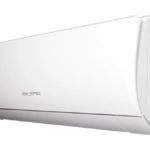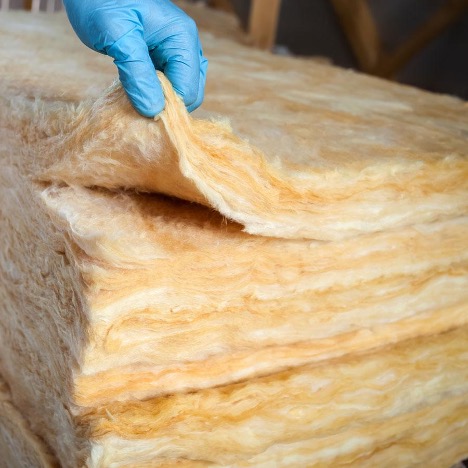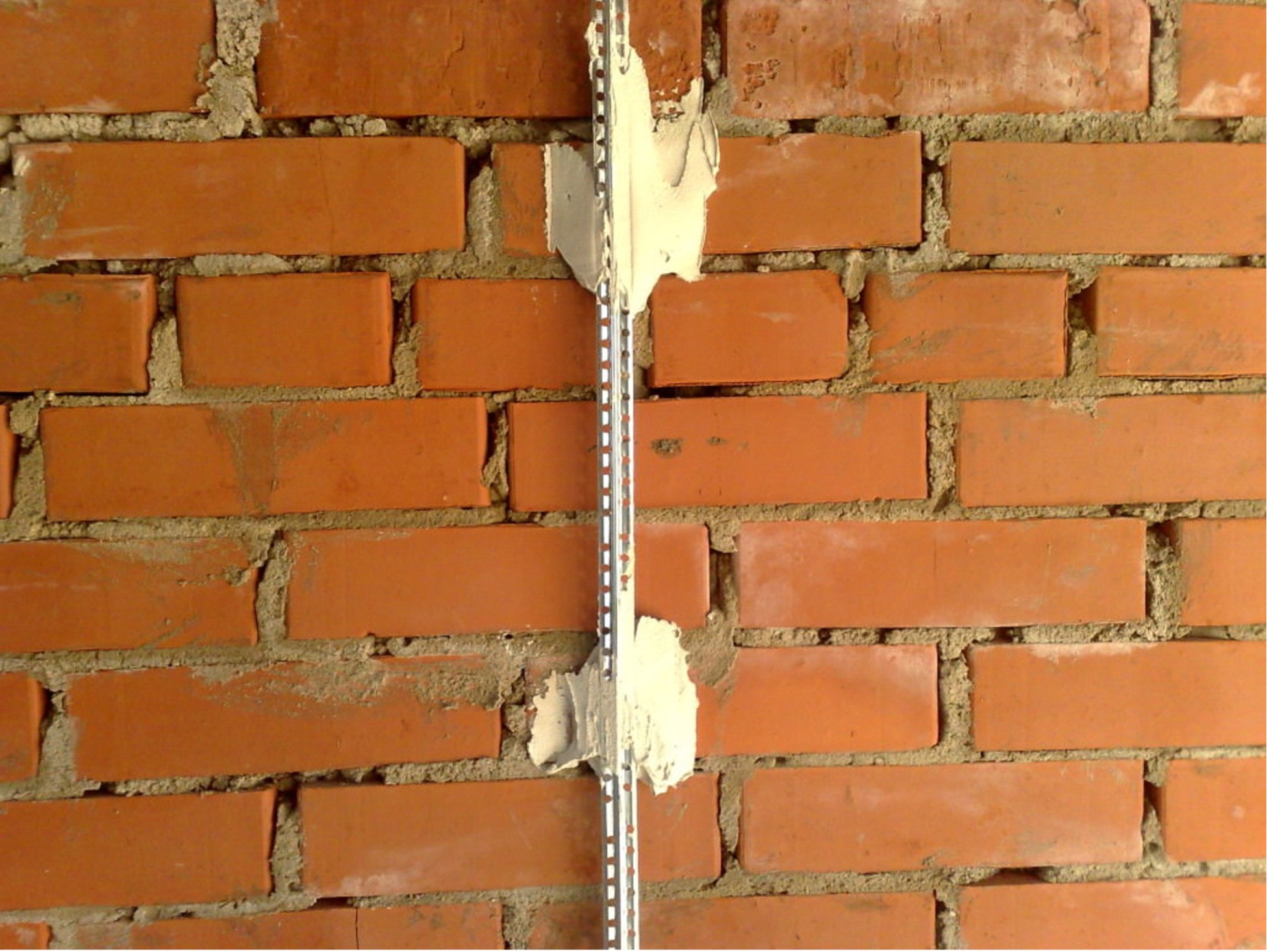Replacing cast iron batteries with bimetallic ones: how to disassemble them yourself
Replacing cast iron batteries with bimetallic ones is done independently. First you need to place a stop under the old radiator, turn off the taps and carefully disconnect it from the system, using a pipe cutter if necessary. Installation of a new radiator is carried out taking into account the requirements for distance and dimensions. Step-by-step instructions are provided in this article.
The content of the article
Dismantling cast iron batteries
Now you need to understand how to disassemble a cast iron battery into sections. For dismantling work you will need the following equipment:
- adjustable wrench;
- grinder equipped with a disc for working with metal;
- a hammer drill equipped with a drill for a concrete wall;
- level;
- radiator connection kit (thermostatic).

The main stages are:
- First of all, turn off both taps and prepare several rags with a basin. If there are no taps, you will have to contact the management company for permission. On the appointed day, specialists must shut off the water supply through the pipes throughout the riser where repair work is being carried out.
- Place a stop under the radiator and completely drain the water.
- Take a lever wrench and remove the flanges as well as each lock nut. It is often difficult to remove them due to “sticking” - in such cases a pipe cutter is used. It is necessary to cut off the end of the pipe after which the nut goes.
- Carefully remove the radiator from each bracket, first placing the stop down to prevent a sharp fall.
Installation of new radiators
Next comes the main stage - replacing cast iron radiators with bimetallic ones. The procedure is as follows:
- Determine the exact location under the window, focusing on the standards shown in the figure.
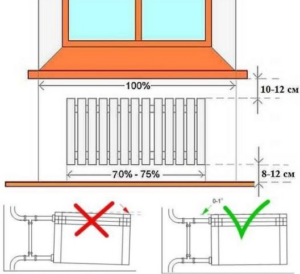
- Take the battery in a film (it is not removed until installation is completed) and place it strictly in the center of the window.
- Apply it to the wall surface and make markings for installing brackets (if you plan to install new fasteners).
- The brackets are fixed with dowels and reinforced with cement mixture (if the wall is made of reinforced concrete or brick). If the surface is plasterboard, double-sided fastening will be required, i.e. with making a through hole.
- Hang the radiator on the installed brackets and attach it to the pipes.
- Check the tightness by blowing air from a car pump with a pressure of 1 atm. If the pressure remains at the same level, then you can open the taps and test the battery.
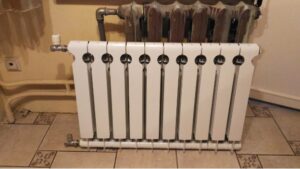
Thus, at home you can replace a cast-iron battery with a bimetallic one with your own hands. The work is not difficult, but care is required both during dismantling and when installing a new radiator. You should check the tightness especially carefully - if in doubt, it is better not to take risks and not open the taps, especially during the heating season. In such cases, it is recommended to call a specialist to conduct additional testing.

